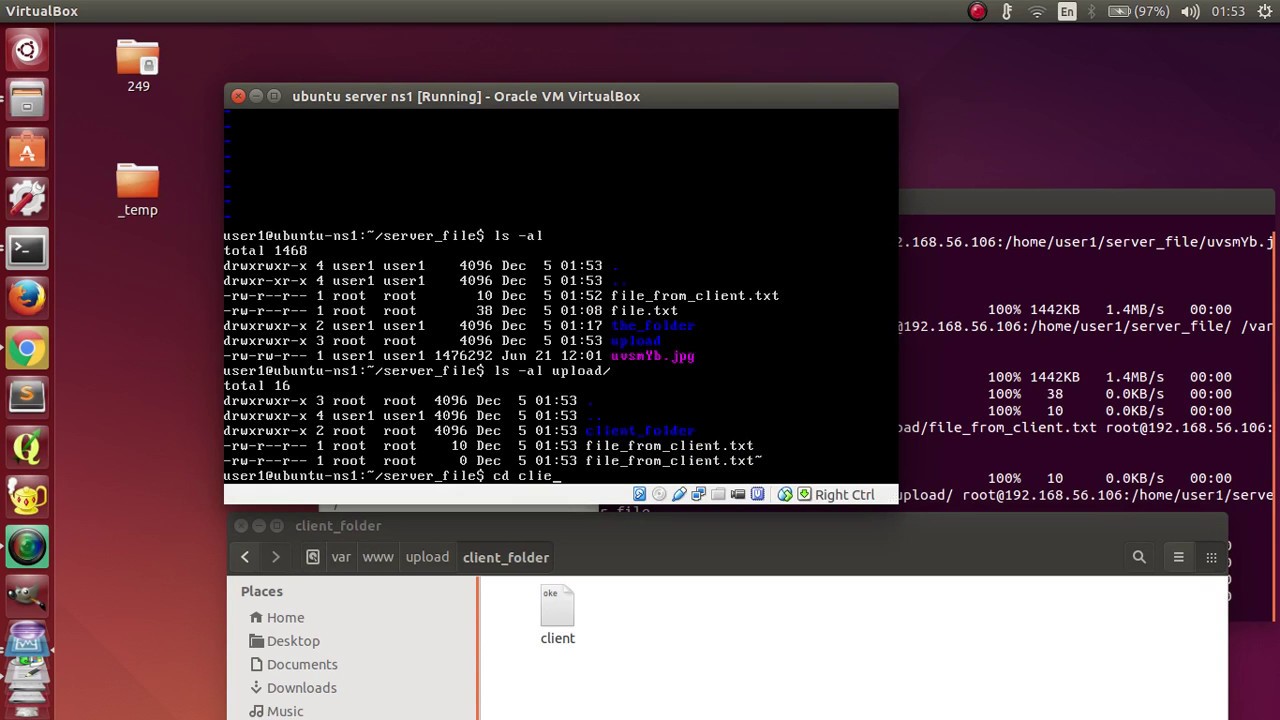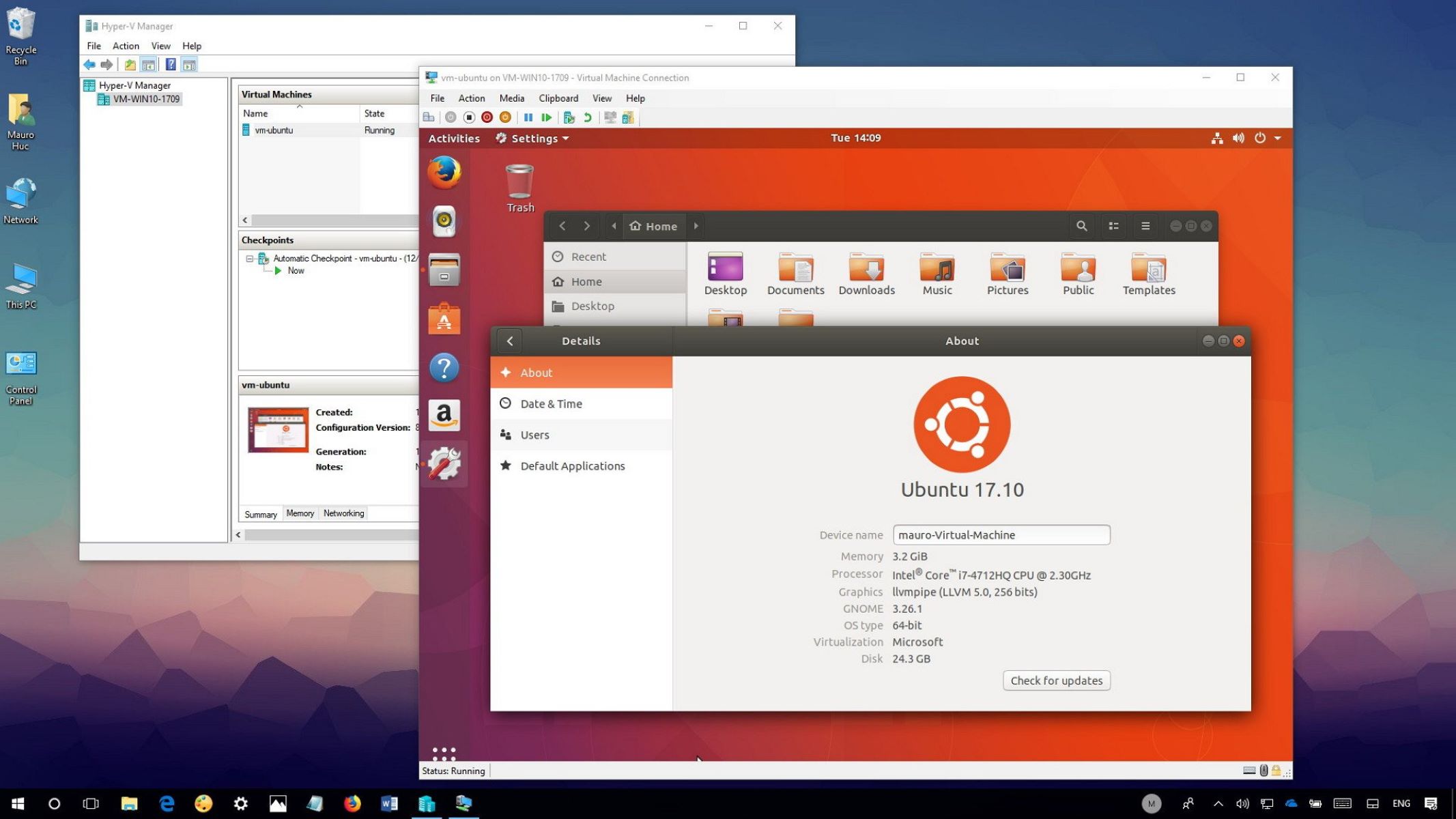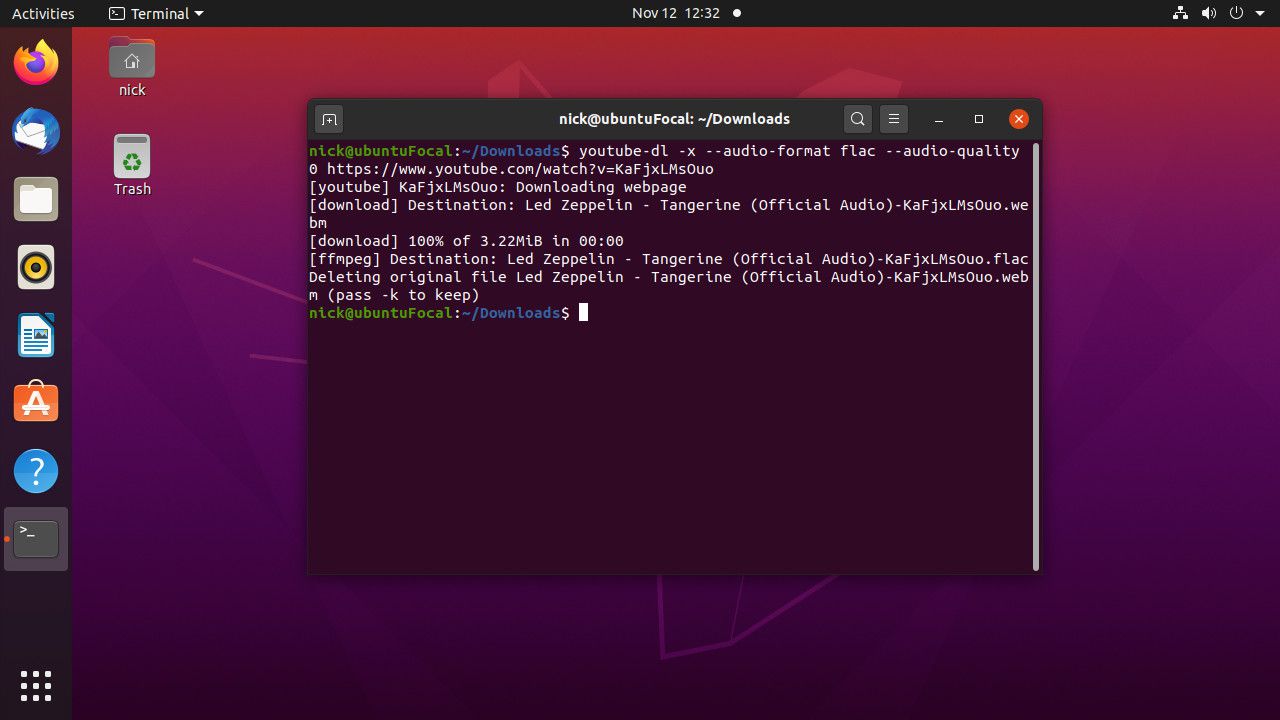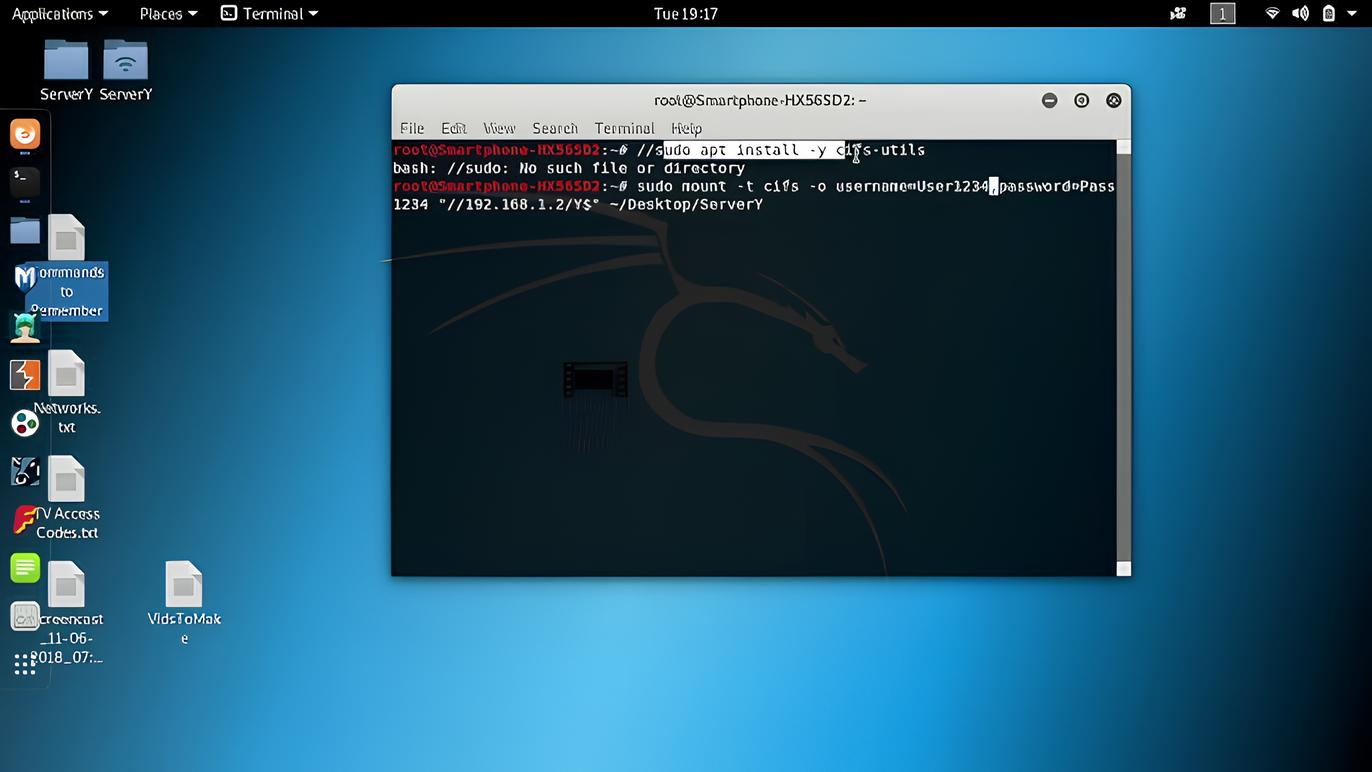Introduction
Welcome to the world of Linux, where downloading files is a vital part of everyday tasks. Whether you’re a Linux enthusiast or a casual user, knowing how to download files efficiently is essential for your productivity. In this article, we will explore various methods and commands that you can use to download files in Linux.
Linux is renowned for its command-line interface (CLI), which provides a powerful and flexible environment for users to interact with their machines. While there are graphical user interface (GUI) options available, this article will primarily focus on command-line tools that allow you to download files seamlessly and efficiently.
Throughout this article, we will cover commands such as wget, curl, and SCP, as well as protocols like FTP and SSH. Each of these methods serves a different purpose and offers unique features, enabling you to download files from various sources with ease.
By the end of this article, you will have a comprehensive understanding of different download techniques in Linux and be able to choose the most suitable method for your needs. So, let’s dive in and explore the exciting world of file downloading in Linux!
Overview of File Downloading in Linux
Before we delve into the specific commands and methods for downloading files in Linux, let’s take a moment to understand the basics of file downloading in this operating system.
In Linux, downloading files involves retrieving data from a remote server and saving it to your local machine. There are multiple ways to accomplish this, including using command-line tools, protocols, and graphical user interfaces.
Command-line tools such as wget and curl provide powerful options for downloading files directly from the command line. These tools allow you to specify the URL of the file you want to download, and they handle all the necessary connections and data transfers in the background. Command-line tools are particularly useful when you want to automate the download process or when working on remote servers without a graphical interface.
Linux also supports various protocols for file downloading, including FTP, SSH, and SCP. The File Transfer Protocol (FTP) is commonly used for transferring files between a local machine and a remote server. SSH (Secure Shell) provides a secure way to connect to remote servers and transfer files securely. SCP (Secure Copy) is a command-line utility that utilizes SSH to securely copy files between hosts.
For those who prefer a graphical interface, Linux offers various file managers and download managers that simplify the process of downloading files. These tools provide a visual interface where you can navigate through directories, select files, and initiate the download process with just a few clicks. While graphical tools are user-friendly and suitable for occasional file downloads, using command-line tools or protocols gives you more control and flexibility.
Now that we have a high-level understanding of file downloading in Linux, it’s time to explore the specific commands and methods in more detail. In the following sections, we will cover the usage of wget, curl, FTP, SCP, and even the graphical user interface for downloading files in Linux.
Using wget Command to Download Files
One of the most popular and widely used command-line tools for downloading files in Linux is wget. It is a non-interactive utility that supports downloading files from various protocols, including HTTP, HTTPS, and FTP.
The basic syntax for using wget is:
$ wget [options] [url]
Here, [options] refer to additional flags that can modify the behavior of the download process, and [url] is the URL of the file you want to download.
For instance, to download a file named “example.zip” from a given URL, you can use the following command:
$ wget https://example.com/example.zip
By default, wget saves the downloaded file in the current working directory. You can specify a different location using the -P option, followed by the desired directory path.
Wget also supports resuming interrupted downloads. If your download is interrupted due to a network error or other reasons, you can use the -c flag to resume the download from where it left off:
$ wget -c https://example.com/example.zip
In addition to resuming downloads, wget provides various options to limit the bandwidth usage, specify the user agent, download in the background, and more. You can explore these options by referring to the wget documentation or by using the –help flag:
$ wget --help
NOTE: When using wget, it is always essential to ensure that you have the necessary permissions to download the file. Some files may require authentication, and in such cases, you may need to provide additional credentials or login information.
With its versatility and flexible options, wget is a powerful tool for downloading files in Linux. Whether you want to download a single file, mirror an entire website, or automate the download process, wget provides the necessary features to accomplish these tasks effectively.
Using curl Command to Download Files
Another popular command-line tool for downloading files in Linux is curl. Curl stands for “Client URL,” and it is a versatile utility that supports downloading files from various protocols, including HTTP, HTTPS, FTP, and many others.
The basic syntax for using curl is:
$ curl [options] [url] -o [output_file]
Here, [options] represent additional flags that modify the behavior of the download process, [url] is the URL of the file you want to download, and [output_file] is the name of the file you want to save the downloaded content as.
For example, to download a file named “example.zip” from a given URL and save it as “downloaded_file.zip,” you can use the following command:
$ curl -o downloaded_file.zip https://example.com/example.zip
Curl also provides options to resume interrupted downloads, just like wget. You can use the -C – flag to resume a previously interrupted download:
$ curl -C - -o downloaded_file.zip https://example.com/example.zip
In addition to basic file downloads, curl offers various features, such as downloading multiple files in parallel, handling authentication, and sending custom headers. It also supports post-processing of downloaded files directly from the command line.
Furthermore, curl supports the use of cookies, which can be useful when downloading files that require authentication or session tracking. You can store and reuse cookies across multiple requests using the -c and -b options, respectively.
Similar to wget, curl provides a wide range of options to tailor the download process to your specific needs. You can refer to the curl documentation or use the –help flag to explore these options:
$ curl --help
Whether you need to download a single file, transfer data with different protocols, or customize your download requests, curl is a powerful tool that offers flexibility and reliability for file downloading in Linux.
Using the FTP Protocol to Download Files
When it comes to downloading files in Linux, the File Transfer Protocol (FTP) is a commonly used protocol. FTP allows you to transfer files between a local machine and a remote server using dedicated commands.
To initiate an FTP connection, you can use the ftp command followed by the hostname or IP address of the FTP server:
$ ftp [hostname/IP]
Once connected, you can navigate through the remote server’s directory structure using commands such as ls (list), cd (change directory), and pwd (print working directory).
To download a file from the remote server, you can use the get command followed by the filename:
ftp> get [filename]
The downloaded file will be saved in the local directory where you initiated the FTP connection.
FTP also provides options for resuming interrupted downloads. If a download is interrupted, you can use the reget command followed by the filename to resume the download:
ftp> reget [filename]
In addition to basic file downloads, FTP also supports transferring directories and downloading multiple files in a single command. You can use the mget command followed by the wildcard pattern or filenames to download multiple files:
ftp> mget [pattern/filenames]
It’s worth noting that FTP connections are often unencrypted by default. To establish a secure FTP connection, you can use the sftp command, which implements the Secure Shell (SSH) protocol for secure file transfers.
Similar to other methods, FTP provides various options and commands to customize your download process, manage remote files, and control the transfer mode. You can refer to the FTP documentation or use the help command within the FTP session to explore these options.
Using the FTP protocol is an efficient and reliable way to download files in Linux, providing you with the ability to transfer files between machines securely and with ease.
Using the SCP Command to Download Files
Another method for downloading files in Linux is through the secure file copying utility, SCP. SCP utilizes the Secure Shell (SSH) protocol to securely transfer files between hosts.
The basic syntax for using SCP is:
$ scp [options] [username@]host:source_path destination_path
Here, [options] represent additional flags that modify the behavior of the SCP command, [username@]host refers to the remote host and optional username, source_path is the path of the file you want to download on the remote host, and destination_path is the directory where the downloaded file will be saved on your local machine.
To download a file using SCP, you can use the following command:
$ scp username@host:source_path destination_path
For example, to download a file named “example.txt” from a remote server with the IP address 192.168.0.1, and save it in your current directory, you can use the following command:
$ scp username@192.168.0.1:/path/to/example.txt .
SCP also supports the use of wildcards to download multiple files or entire directories. For instance, to download all files from a specific directory on the remote server, you can use the following command:
$ scp username@192.168.0.1:/path/to/files/* destination_directory
SCP ensures the secure transfer of files by utilizing public key cryptography and SSH authentication. It encrypts the data during transmission, making it a suitable option for sensitive information.
Additionally, SCP provides options to preserve file attributes, such as timestamps and permissions, during the transfer. You can use the -p flag to preserve these attributes:
$ scp -p username@host:source_path destination_path
SCP is a reliable and secure method for downloading files in Linux, allowing you to transfer files easily and securely between hosts using SSH authentication.
Using the rsync Command to Download Files
When it comes to efficient and synchronized file transfers, the rsync command is a powerful tool in Linux. Rsync is specifically designed for transferring and synchronizing files between different locations.
The basic syntax for using rsync is:
$ rsync [options] [source] [destination]
Here, [options] represent additional flags that modify the behavior of the rsync command, [source] refers to the source directory or files you want to download, and [destination] is the directory where the files will be saved on your local machine.
To download files using rsync, you can use the following command:
$ rsync -av [username@]host:source_path destination_path
For example, to download files from a remote server with the IP address 192.168.0.1, and save them in your current directory, you can use the following command:
$ rsync -av username@192.168.0.1:/path/to/files/ .
Rsync is known for its ability to perform incremental transfers, which means it only transfers the differences between the source and destination files. This makes subsequent transfers faster and more efficient.
In addition to basic file transfers, rsync offers various options to customize your download process. For example, you can use the –exclude flag to exclude specific files or directories from the transfer, or the –progress flag to display a progress bar during the download.
Rsync also supports remote transfers over SSH, allowing you to securely download files from remote servers. You can use the SSH protocol by specifying the username and hostname in the rsync command:
$ rsync -av [username@]hostname:/path/to/source destination
With its powerful synchronization capabilities, efficient transfer algorithm, and ability to work over SSH, rsync is an excellent choice for downloading files in Linux, especially when you need to regularly synchronize files between different locations.
Using the GUI to Download Files
For users who prefer a more visual and user-friendly approach, Linux offers several graphical user interfaces (GUIs) that simplify the process of downloading files. These GUI tools provide an intuitive interface where you can browse, select, and download files with ease.
One of the most commonly used file managers in Linux is Nautilus, which is the default file manager for the GNOME desktop environment. Nautilus allows you to navigate through directories and download files by simply clicking on them.
To download a file using Nautilus, follow these steps:
- Open Nautilus by clicking on the file manager icon in your taskbar or navigating to the “Files” application in your application menu.
- Navigate to the directory where the file is located.
- Click on the file to highlight it.
- Right-click on the file and select “Download” or a similar option from the context menu.
Nautilus will then download the file from the remote location and save it to your local machine.
In addition to Nautilus, there are other popular file managers available in Linux, such as Dolphin for KDE, Caja for MATE, and Thunar for Xfce. These file managers also provide similar functionality for downloading files, making the process straightforward and accessible.
Furthermore, web browsers in Linux, such as Firefox and Chrome, offer built-in download managers that allow you to easily download files from the internet. When you click on a file download link in your browser, a dialog box will appear, allowing you to specify the download location and manage the download process.
Using a GUI to download files provides a visual and intuitive approach, making it ideal for users who are less comfortable with command-line tools. It eliminates the need to remember command syntax and allows for easy navigation and selection of files to download.
Whether you choose to use a file manager or a web browser’s built-in download manager, the GUI approach offers convenience and simplicity for downloading files in Linux.
Conclusion
Downloading files in Linux is an essential task, and knowing the various methods and commands available can significantly enhance your productivity. Whether you prefer the command line or a graphical user interface, Linux offers a range of tools to suit your needs.
We explored the versatility of command-line tools like wget and curl, which provide powerful options for downloading files with just a few commands. These tools offer features such as resuming interrupted downloads, limiting bandwidth usage, and handling authentication, making them suitable for both automated and interactive downloading processes.
Additionally, we covered protocols like FTP and SCP, which provide secure and flexible options for transferring files between local and remote machines. Using FTP, you can navigate directories and download files using dedicated commands, while SCP utilizes the SSH protocol to ensure secure file transfers. These methods offer efficiency and security for downloading files in Linux.
We also discussed the benefits of using the rsync command, which allows for efficient synchronization of files between different locations. With its incremental transfer capabilities, rsync minimizes the amount of data transferred, making subsequent transfers faster and more efficient.
For those who prefer a graphical user interface, Linux provides a range of options. File managers like Nautilus offer an intuitive interface for browsing, selecting, and downloading files with a simple mouse click. Web browsers also have built-in download managers that provide convenient downloading capabilities with just a few clicks.
As you become more familiar with the different methods and commands for downloading files in Linux, you can choose the approach that best suits your workflow and objectives. The versatility and flexibility of Linux allow you to download files seamlessly, whether it’s a single file, multiple files, or entire directories.
So, dive into the world of file downloading in Linux, experiment with different methods, and find the approach that works best for you. Enhance your productivity and enjoy the seamless file downloading experience that Linux has to offer!

























